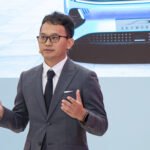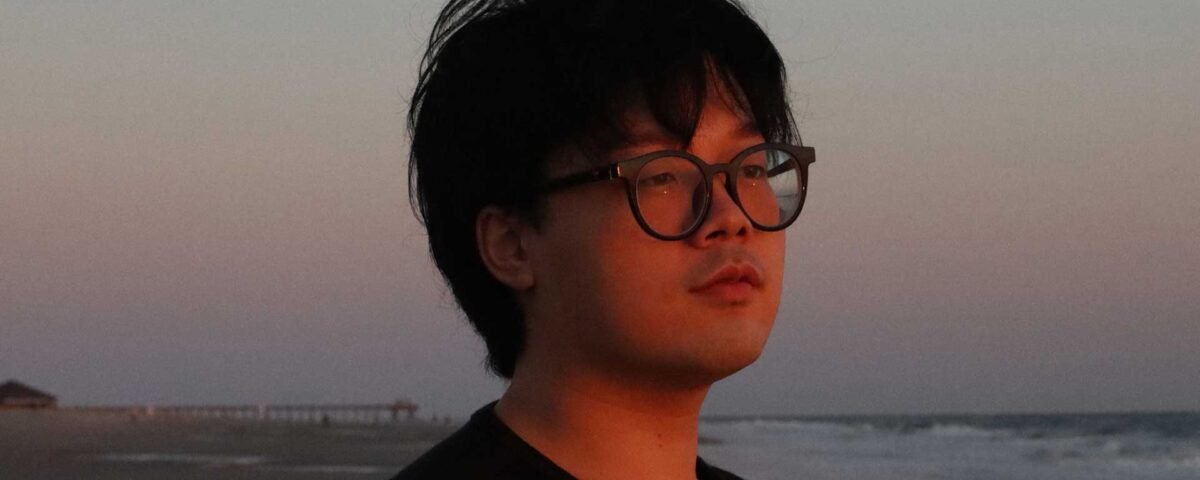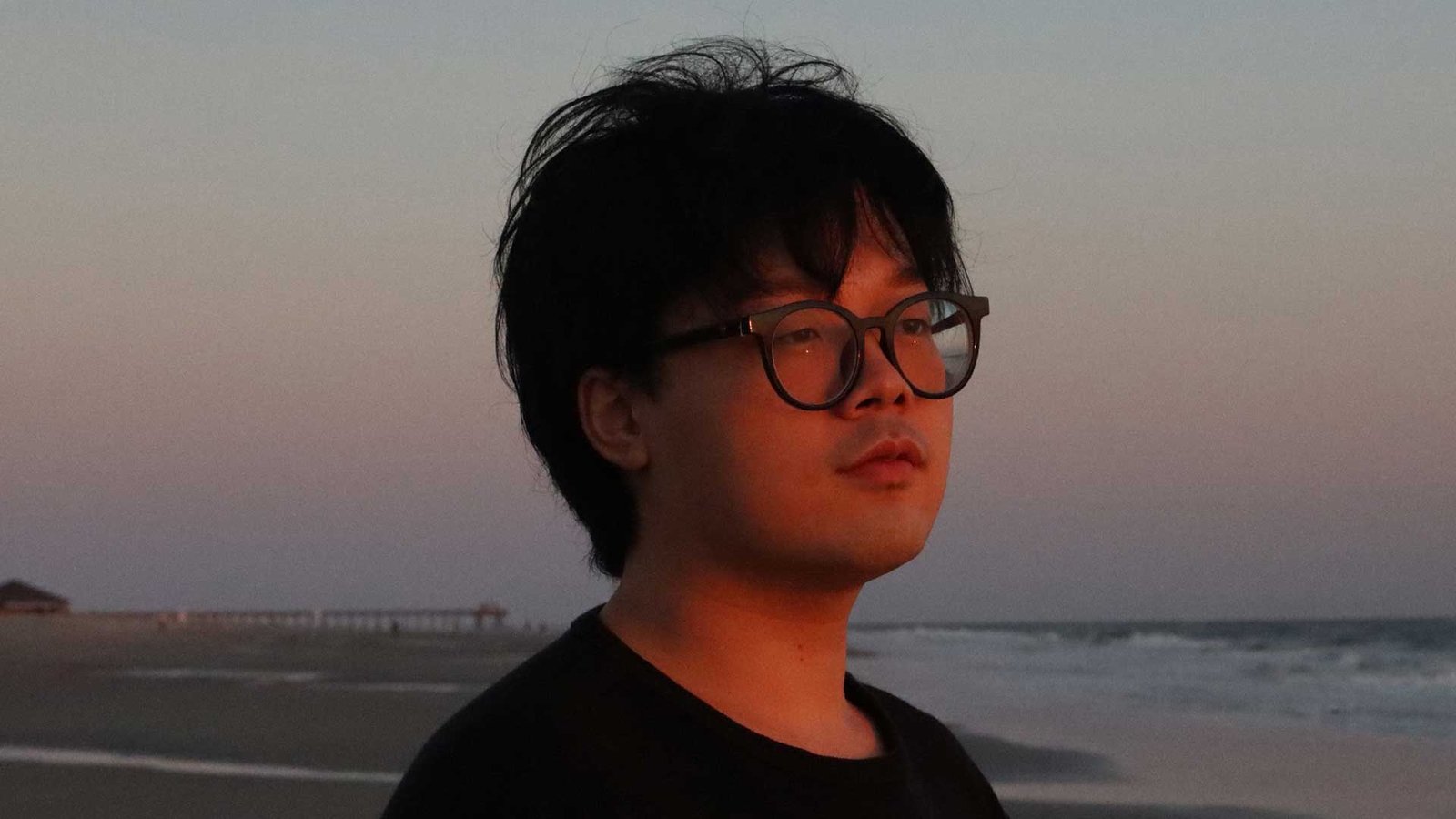
Zecheng Zhong Turns Electric Dreams Into Reality With SKYWORTH Q
June 3, 2025
Under Bridge Space 2.0: A Strategic Approach to Affordable Housing by CL Studio
June 3, 2025Tielin Ding
Tielin Ding is a passionate industrial designer whose love for crafting and visual storytelling began in childhood, shaping his creative journey early on. He's inspired by design’s unique ability to blend human emotion with practical innovation, approaching every project with care, intention, and impact.
Thank you! I’m Tielin Ding—though most people know me as Dano, a passionate industrial designer originally from Xi’an, Shaanxi Province, China. I hold a BE in Industrial Design from China, and recently earned both an MFA in Industrial Design and an MA in Design Management from the Savannah College of Art and Design (SCAD).
My journey into design began in childhood, sparked by a deep love for crafting, making, and visual storytelling. I spent countless hours creating hand-made objects and art pieces that reflected the world as I imagined it. Encouraged by my parents, I nurtured this creative drive from a young age, and when the time came to choose a major, I confidently committed to industrial design.
What inspires me most about design is its unique power to bridge human emotion with practical innovation. It’s not just about solving problems—it’s about designing with care, intention, and impact. Winning the MUSE Design Awards has reaffirmed my belief in meaningful design, and I’m excited to keep growing as a designer who values empathy, clarity, and purpose.
Receiving recognition from the MUSE Design Awards is both humbling and deeply motivating. As a young designer who’s still at the beginning of a long creative journey, this award affirms that the direction I’ve chosen—and the values I bring into my work—are being seen and appreciated on a global stage.
It’s especially meaningful to be recognized for a project that grew from both personal insight and professional research. For me, MUSE is more than just an award—it’s a reminder that design rooted in empathy, clarity, and purpose has the power to resonate across cultures and communities. It gives me the confidence to keep asking meaningful questions, pushing boundaries, and designing with intention.
Winning the MUSE Design Awards has significantly elevated the visibility of both my work and my professional identity as a designer. As a recent graduate transitioning into the industry, this recognition has helped open doors—sparking interest from design firms, internship programs, and mentors I deeply respect.
It has also brought recognition to the academic institutions and mentors who supported me throughout my journey. SCAD's encouragement of interdisciplinary exploration gave me the tools and space to develop “MyO,” the awarded project, which has since been featured in design showcases and publications beyond the classroom.
Most importantly, this award has strengthened my belief in the real-world potential of my work. It’s allowed me to connect with a wider creative community and has become a catalyst for future collaborations and international opportunities.
Experimentation is at the heart of my creative process—it allows me to explore not only form and function, but also emotion, usability, and meaning. I see experimentation as a bridge between intuition and validation. It's how I challenge assumptions, test new possibilities, and ultimately create designs that are grounded in reality.
A great example is my MUSE-winning project, MyO, a wearable device suite designed to improve muscle training performance through real-time EMG feedback. At first, I had only a broad idea of integrating muscle sensing with fitness routines. But through rounds of experimentation—testing sensor placement, materials, and user comfort—I was able to refine the product into a modular, ergonomic design that adapts to different body types and workout styles.
This process also involved human-centered prototyping and field interviews with athletes and rehabilitation users. The feedback loop between research and hands-on iteration allowed me to develop a solution that felt both technically advanced and deeply personal.
One of the most unusual yet powerful sources of inspiration I’ve drawn from was my own experience with physical fatigue and injury during high-intensity workouts. While training, I noticed how difficult it was to tell whether I was truly engaging the right muscle groups, or simply pushing my body in unsustainable ways. That personal uncertainty became the emotional starting point for MyO, the wearable muscle performance project that eventually won in the MUSE Design Awards.
It wasn’t a sketchbook, a material, or a visual reference—but rather a feeling: the disconnect between effort and efficiency, between movement and awareness. That led me to explore how technology could create more mindful connections between the body and performance.
Sometimes, inspiration doesn’t come from aesthetics or objects—but from the moments when something in life feels off or unresolved. As a designer, I’ve learned that these “discomforts” can be fertile ground for innovative, empathetic solutions.
I wish more people understood that great design doesn’t start with form—it starts with listening. The most powerful part of the process often happens before any sketch is made: talking to users, identifying invisible needs, and asking the right questions.
There’s a misconception that design is purely about aesthetics or creativity, when in reality, it’s a rigorous and strategic process. It involves research, iteration, failure, and adaptation. Behind every intuitive interface or ergonomic product is a web of decisions shaped by empathy, data, and real-world testing.
In my own practice, I’ve found that stakeholders often gain a deeper appreciation for design once they’re involved in early co-creation workshops or user testing sessions. When they see how design translates insight into tangible impact, they begin to see it not as a final layer—but as a central engine for innovation.
For me, the key to balancing client expectations with my own vision is clarity and empathy on both sides. I see clients not just as approvers, but as collaborators—and my role as a designer is to uncover the deeper goals behind their requests, even the ones they may not have fully articulated.
At the same time, I believe designers have a responsibility to bring their perspective to the table—not just to execute, but to challenge assumptions when necessary. If I sense that a certain decision might compromise usability or long-term impact, I’ll advocate for alternatives—supported by research, prototypes, or user feedback. It’s not about ego; it’s about ensuring the solution delivers true value.
Ultimately, the best outcomes often emerge from open dialogue and mutual respect. When clients see that your ideas are grounded in thoughtful rationale and a desire to elevate the outcome—not just personal preference—they’re more open to trust and collaboration.
One of the biggest challenges I faced with the MyO project was translating complex EMG (electromyography) technology into a wearable product that was not only functional, but also comfortable, intuitive, and emotionally approachable.
At the beginning, I had to bridge a huge knowledge gap—understanding how muscle signals are captured, how to place sensors effectively, and how to process the data in a way that delivers meaningful feedback to users. This involved a deep dive into technical research, but also countless rounds of user interviews and iterative prototyping.
Another challenge was balancing ergonomics with modularity. I wanted each device in the suite to be adaptable to different body types and workout contexts, but without feeling bulky or clinical. Finding the right materials, shapes, and attachment methods required dozens of low- to high-fidelity experiments.
What helped me push through was a mindset of curiosity and persistence—and being willing to learn from each failure along the way. I also leaned heavily on user-centered testing, which constantly re-aligned the design with real needs, not just assumptions. In the end, every challenge became a turning point for better clarity and stronger design decisions.
When I encounter a creative block, I’ve learned that the best thing I can do is step away from the screen and return to real-life observation. Sometimes that means picking up a pencil and sketching freely without any expectations. Other times, it’s as simple as going for a walk, getting a workout in, or having a casual conversation with someone outside the design field.
As someone who loves movement and physical activity, I often find that getting back into my body helps unlock ideas that my brain alone can’t solve. Design isn’t just intellectual—it’s sensory, emotional, and intuitive. Reconnecting with those aspects resets my perspective.
I also keep a habit of collecting small observations from daily life—textures, sounds, frustrations, moments of delight. When I revisit those notes during a block, I often find a hidden seed of inspiration that helps me move forward.
I bring a strong sense of empathy, resilience, and body-awareness into everything I design. Growing up in Xi’an, China, I was encouraged by my parents to explore creativity from an early age—through drawing, crafting, and hands-on invention. That freedom to create helped me develop not just a love for design, but also a mindset grounded in curiosity and care.
A big part of my personal identity also comes from my passion for sports and physical movement. As someone who trains regularly and has participated in competitive sports like table tennis and fitness-based routines, I’ve experienced firsthand the disconnect that can occur between how our bodies feel and how they perform. These experiences have deeply influenced how I design—not just for function, but for comfort, confidence, and intuitive feedback.
My cross-cultural education and life between China and the U.S. also shaped the way I approach design—constantly balancing logic and emotion, structure and fluidity. I care deeply about how products interact with people both physically and emotionally, and I always aim to create designs that support people not just in what they do, but in how they feel while doing it.
To me, design is not only about solving problems—it's about honoring human experience. And that belief is at the core of every concept I bring to life.
Stay curious, stay patient, and stay true to why you started. Design is not a straight line—it’s a journey filled with questions, contradictions, and countless iterations. Don’t be afraid to fail. In fact, failure often teaches you more than success ever could.
Listen deeply—to people, to the world around you, and to your own instincts. Real design starts with empathy, not answers. Whether you're designing for a global user base or a single niche community, always ground your work in real human needs.
Also, don’t rush the process. It takes time to find your voice, your rhythm, and your place in this field. And that’s okay. Great design comes not from speed, but from care.
Lastly, keep making things—even when no one’s watching. Some of the most important breakthroughs happen when you're just creating for the sake of learning, exploring, or healing. That passion is your compass, and it will carry you further than you think.
I would choose to collaborate once again with Professor Chunshik Kim, who was my thesis advisor during the development of MyO. The reason is simple: the same reason I chose him as my mentor in the first place. During my time at SCAD, I was deeply inspired by his design capabilities and thought processes.
One project that particularly influenced me was his work at Ziba on the redesign of the Heinz ketchup bottle. This project wasn't just about creating an aesthetically pleasing or functional product; it was about deeply understanding the emotional connection consumers have with a brand. Professor Kim's approach taught me that design is not merely about form and function but about creating meaningful connections between products and their users.
His mentorship has profoundly shaped my perspective on design, and I would be honored to collaborate with him again to continue exploring the depth and impact of thoughtful design.
I wish someone would just ask: “Do you need a full-time job as an industrial designer?”
Because my answer would be: “Yes—please hire me!”
Tielin Ding
Tielin Ding is a passionate industrial designer whose love for crafting and visual storytelling began in childhood, shaping his creative journey early on. He's inspired by design’s unique ability to blend human emotion with practical innovation, approaching every project with care, intention, and impact.
Explore the journey of Yuan Tian, the Gold Winner of the 2025 MUSE Design Awards. She’s a landscape designer inspired by a lifelong love of nature, creating outdoor spaces that blend creativity with purpose and invite connection to the natural world.







